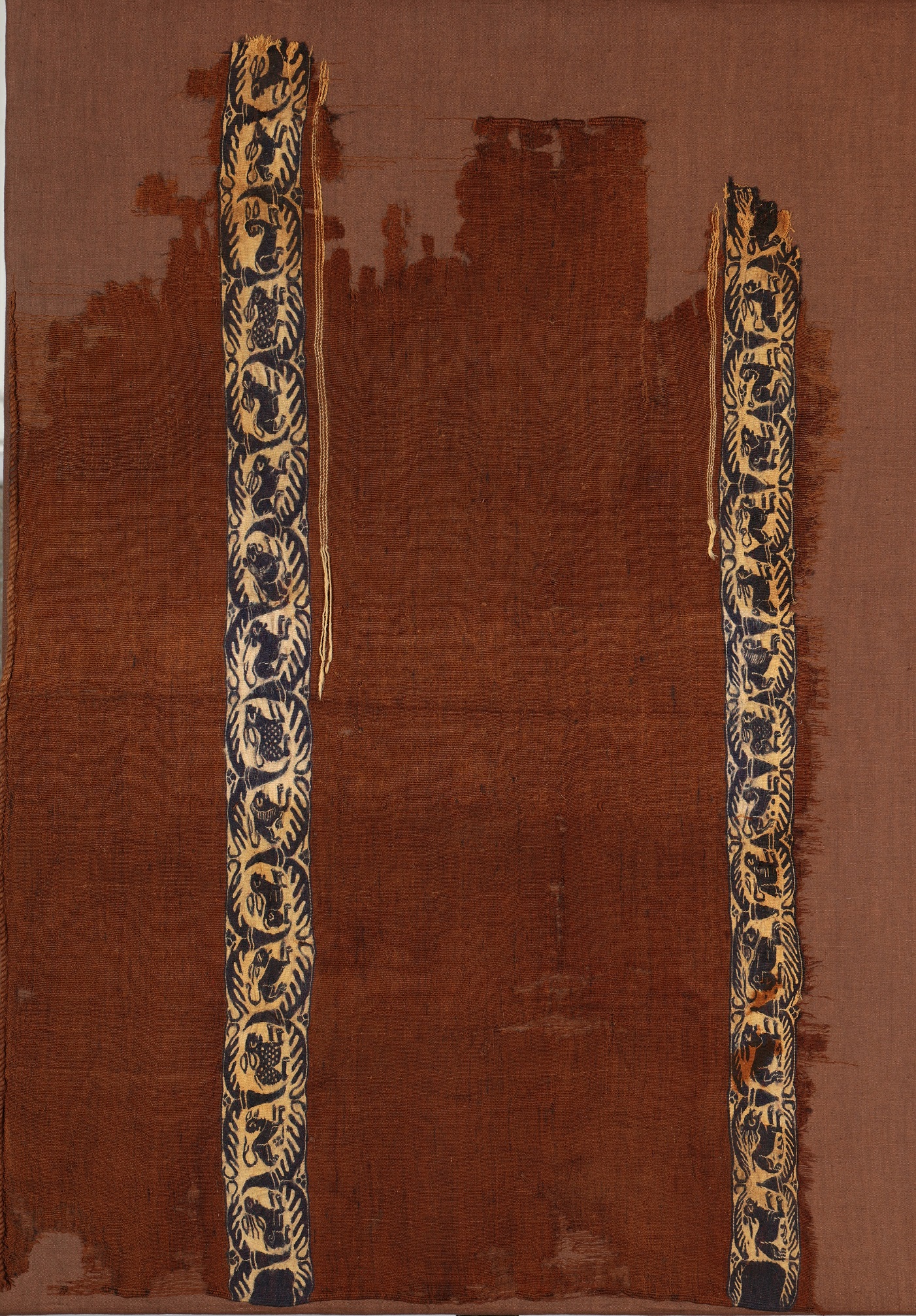On a pale brown ground, are two pale bands decorated with violet foliated acanthus scrolls that frame all sorts of four-legged animals, including a unicorn. All are running in the same direction, but this changes in function of the neck opening, at the upper extremity of the left hand band (cf. FT 131).
Origin:
Egypt
Date:
5th - 6th century
Material:
Wool
Dimensions:
Warp: 51 cm, weft: 78 cm
Comparisons:
Staatliche Museen zu Berlin, inv. 4627.
Abegg-Stiftung, inv. 4249a.
Coloured tunics such as these had often been worn in Egypt since the Roman period, mainly by women and children.
Provenance:
Collection Coptic textiles Fill-Trevisiol: donation
Location:
Musée royal de Mariemont
Woollen tapestry, mixing red and blue yarn to achieve violet.
I. Ground weave
Warp:
brown wool S: 11-12/cm
Weft:
brown wool S: 26/cm
Weave:
weft-faced tabby
II. Tapestry areas
Warp:
brown wool S: 11-12/cm
Weft:
natural-coloured wool and purple wool (fleece dyed composed of red and blue) wool S: 70-85/cm
Weave:
weft-faced tabby
Special techniques:
slit tapestry, eccentric weft; selvedge: 3 units of 3 warp yarns each selvedge neck opening: 2 units of 2 warp yarns each + reinforced by extra weft around the warp units; finishing borders on both sides: twined cord of warp yarns


